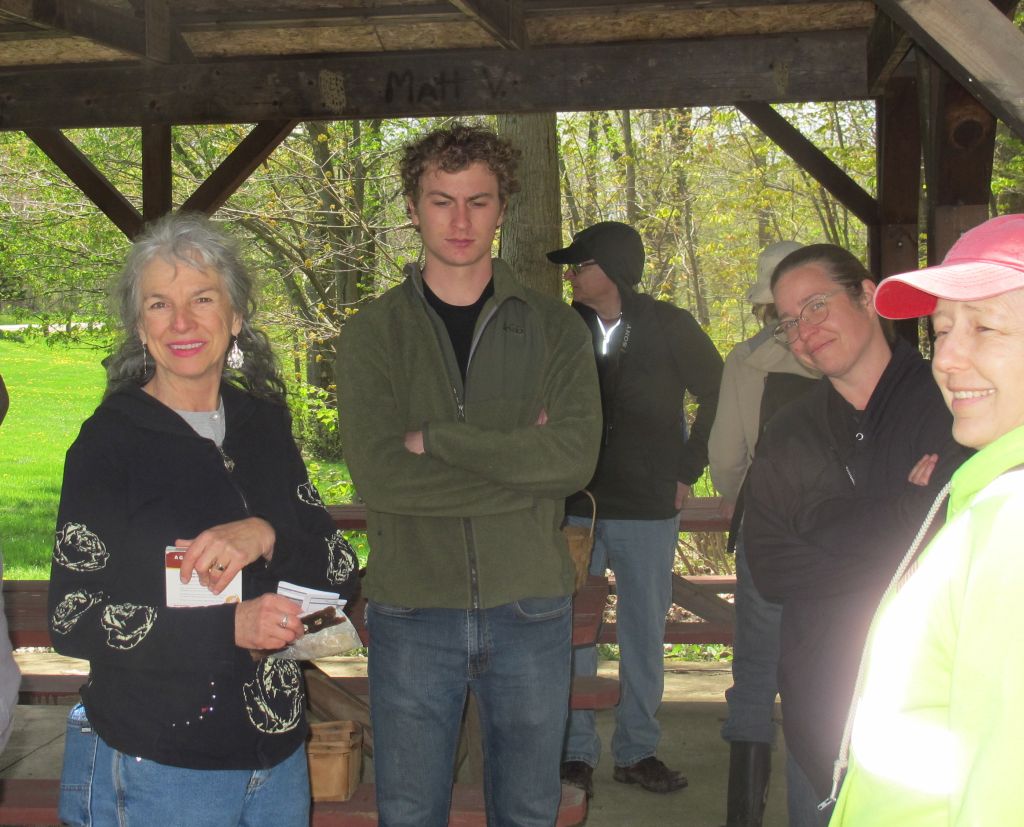Summer Foray 2018 at Zaleski ODNR Complex
Dates: July 14-15, 2018
Location: Zaleski ODNR Complex in Vinton County; 29371 Wheelabout Rd, McArthur OH 45651
Foray Organizer: Martha Bishop, bishopm@ohio.edu (740) 593-4552
Please join us for our Summer Foray in the beautiful and diverse forests of southeastern Ohio. We will again meet at the recently renovated Zaleski ODNR Complex, 29371 Wheelabout Road, McArthur, Ohio 45651.
We will feature nationally known mycologists Walt Sturgeon and John Plischke, III. Walt will serve as chief identifier for the foray and John will present our featured talk: Boletes of the Northeast and Beyond. Both Walt and John are nationally recognized as expert identifiers of fungi, and both have won numerous awards for their fungal photographs.
John Plischke, III is the author of Good Mushroom Bad Mushroom: Who’s toxic, Where to find them, and how to enjoy them safely, and Morel Mushrooms and Their Poisonous Look-alikes. John is a founding member of the Western Pennsylvania Mushroom Club, and serves as Chair of the Photography Committee for the North American Mycological Association.
Walt Sturgeon has authored or co-authored and provided photographs for several popular mushroom books including Mushrooms of Ohio, Waxcap Mushrooms of Eastern North America, Mushrooms and Other Fungi of the West Virginia High Country, and has recently published Mushrooms of the Northeast with Teresa Marrone. Walt serves as Awards Committee Chair for the North American Mycological Association.
July 14 (Saturday)
8:30-9:30 am. Meet at Zaleski ODNR Complex for registration and coffee. Please bring a reusable cup and a cash donation to cover costs of coffee, rolls, etc.
10:00 am. Forays will begin. We will carpool to several different sites in the local hills. Please bring hiking gear, mushroom basket, small pocket knife, water bottle, and whistle.
12:15 p.m. We will have a potluck lunch, so please bring something to share. Please bring your own iced cooler for items that require refrigeration, and a crockpot for items that must stay hot. A small refrigerator, stove, microwave and electric outlets are available, however, please know that you will be responsible for all preparation and clean-up of your contribution.
Please bring your dish ready to serve with a label and ingredient list, and serving utensils. Any wild mushrooms for consumption must be verified by expert collectors. Please do not bring any home-canned foods.
1:45 p.m. John Plischke, III will present: Boletes of the Northeast and Beyond.
John says: “Boletes can be popular sought after mushrooms.” He will discuss places to look for boletes, and the types of trees that they are found under. He will also talk about bolete edibility, and bolete seasons, giving a few secret hunting tips, resourced to help with ID.
2:45 Afternoon forays depart from Zaleski ODNR complex.
5:30 p.m. Table talk with explanation of the day’s collections.
6:30 p.m. Dinner at The Lodge at Lake Hope. http://lakehopelodge.com/directions/
See menus on their website: http://lakehopelodge.com/menunew
Please RSVP to bishopm@ohio.edu or (740) 593-4552 if you plan to be here for dinner so that we can reserve adequate space. On Saturday morning we will have a final count for our reservation
July 15 (Sunday)
9:00 am. Coffee and review of collected fungi. Please bring a reusable cup and a cash donation to cover costs of coffee, rolls, etc.
Clean up and listing of collections. Please help out if possible.
11:30 a.m. Sunday foray.
Accommodations:
Reserve your cabin or campsite at nearby Lake Hope State Park NOW!
1-866-644-6727 or http://parks.ohiodnr.gov/lakehope
Reservations will fill quickly.
Area hotels and other lodging for Athens, Ohio are listed at: http://athensohio.com/category/wheretostay/
Please print out your driving directions in advance. There is usually internet connectivity at the foray site, but connectivity may be intermittent in surrounding areas.
Check http://www.ohgo.com/dashboard/se-ohio for road conditions and flooding. Please be aware that part of State Route 56 is closed between Athens and State Route 278 until at least July 13 for road construction. You should be able to check the link above to determine whether the road will still be closed on the 14th. There are alternative routes.
Here is a pdf copy of this announcement:
OMS Summer Foray 2018

















